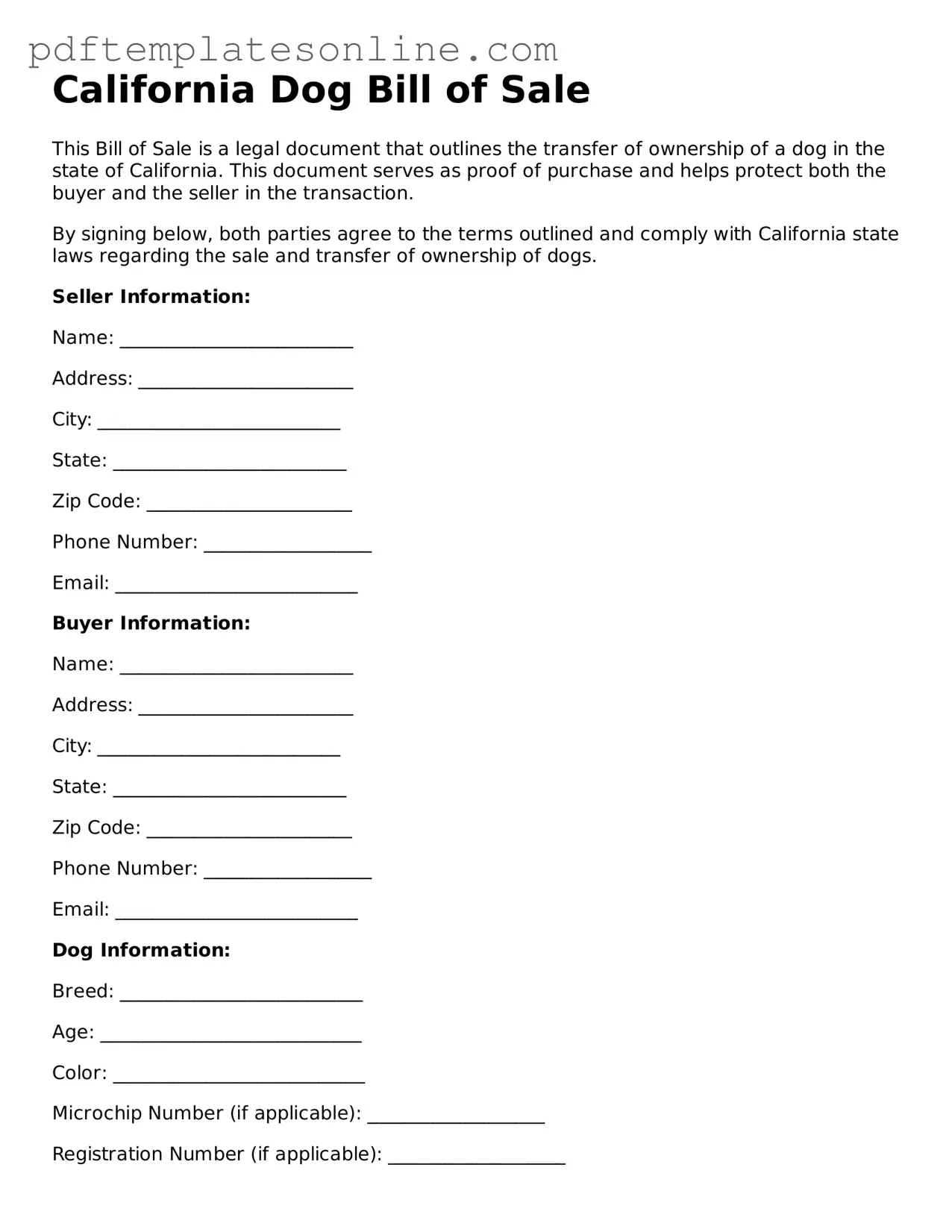When filling out the California Dog Bill of Sale form, many people inadvertently make mistakes that can lead to complications later on. One common error is failing to provide complete and accurate information about the dog being sold. This includes details such as the dog's breed, age, and any identifying characteristics. Omitting this information can create confusion and may even lead to disputes between the buyer and seller.
Another frequent mistake is not including the seller's and buyer's contact information. It's essential to provide full names, addresses, and phone numbers for both parties involved in the transaction. This information is crucial for future communication and for ensuring that both parties can reach each other if any issues arise after the sale.
Many individuals also overlook the importance of signatures. Both the seller and the buyer must sign the form to validate the transaction. Without these signatures, the document may not hold up legally, which could lead to challenges in ownership claims down the line. It’s a simple step, but one that is often forgotten in the rush to complete the sale.
Additionally, people sometimes neglect to include the sale price of the dog. This detail is not just a formality; it serves as a record of the transaction. Without a stated price, it can be difficult to establish the terms of the sale, which may cause confusion or disputes later. Always be sure to clearly indicate the amount agreed upon for the sale.
Lastly, failing to keep a copy of the completed Dog Bill of Sale form can be a significant oversight. After the transaction is complete, both parties should retain a copy for their records. This document serves as proof of the sale and can be invaluable if questions about ownership arise in the future. Keeping a copy ensures that both the buyer and seller have access to the same information should any issues come up later.
